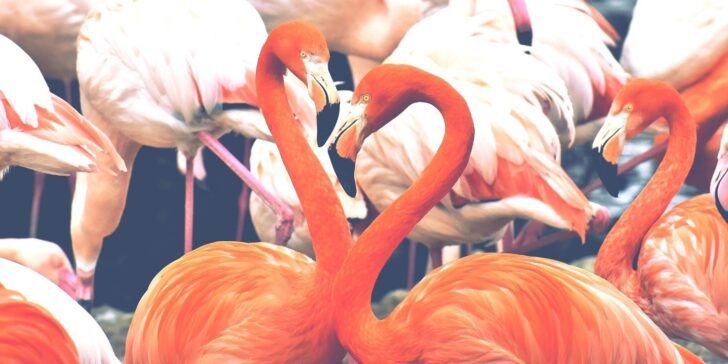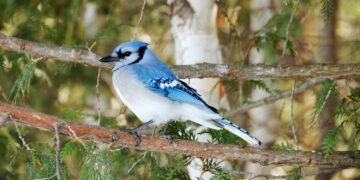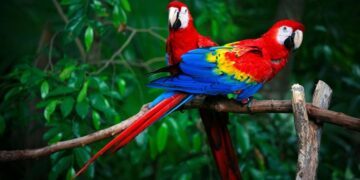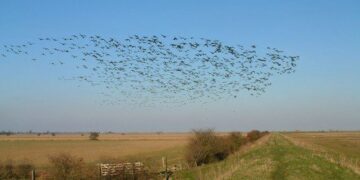Flamingos are a fascinating species with their famously long necks and pink-colored feathers.
But how do they get such vibrant pink feathers, and why are they so flexible?
Check out these top 15 fabulous facts about flamingos!
There are only six species of flamingo.
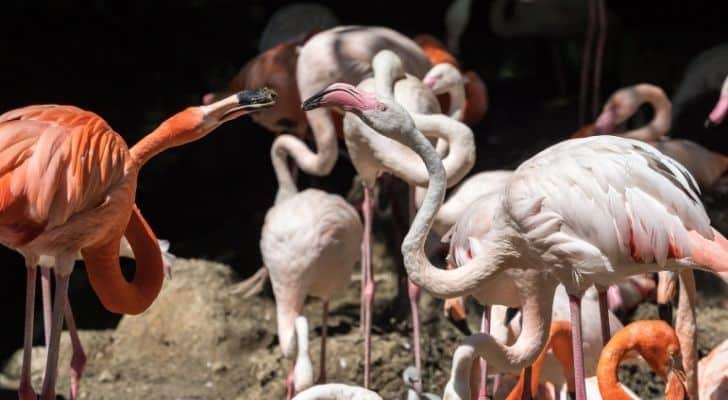
Although it might be difficult to tell them apart, there are six different species of flamingos.
The six species are the greater flamingo, lesser flamingo, Chilean flamingo, Andean flamingo, James’ (or puna) flamingo, and American (or Caribbean) flamingo.
They have obtained their names either due to their looks or their global positioning.
Wild flamingos are pink because they consume vast quantities of algae and insects.
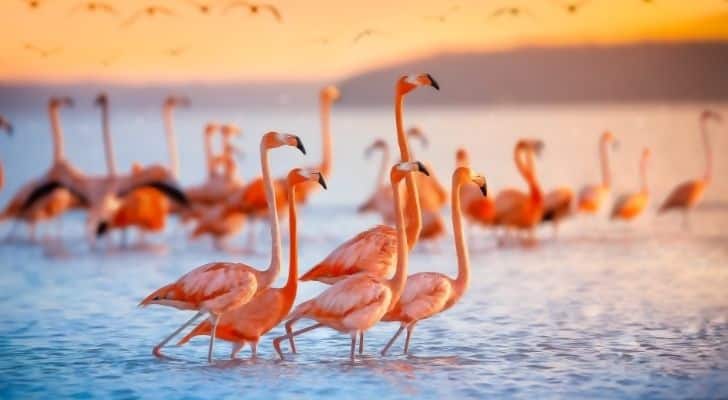
Flamingos are usually found in wetland areas rich in algae, larvae, insects, and sometimes shrimp.
These all contain high levels of beta carotene, which contains a red/orange pigment.
When digested by flamingos, enzymes break down the carotenoids into pigments.
These are usually absorbed by fats in the liver but also for flamingos, and they are deposited into the skin and feathers – giving them that red or pink hue.
Flamingos are known for spending most of their time standing on one leg.
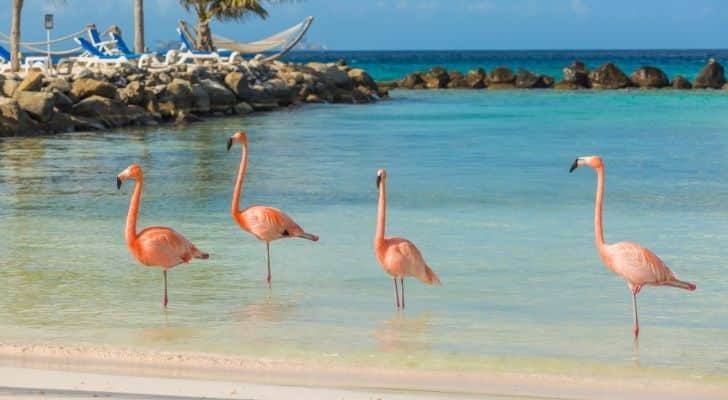
It is common for some birds to stand on one leg, but for flamingos, it’s a must!
Flamingos lose heat through their feet and legs due to living in wetlands.
So as a way to keep warm, they only stand on one leg.
Tucking the other leg close to their bodies reduces heat loss and allows them to conserve energy.
There are 19 bones in a flamingo’s neck.
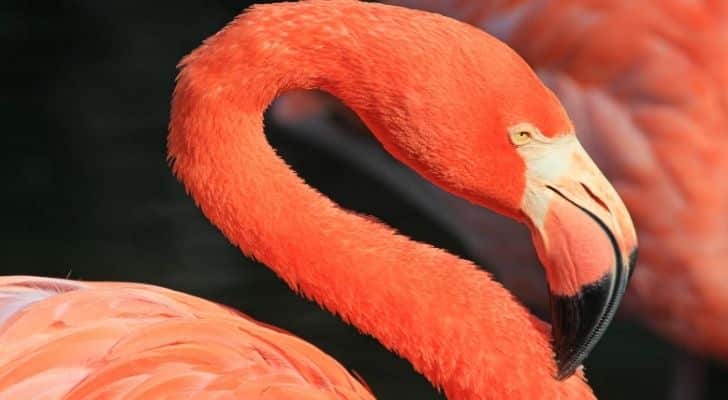
There are 19 vertebrae found within a flamingo’s neck.
This is the main reason for their ability to move their necks so much.
Having 19 bones creates a lot of flexibility which is needed for survival.
Having flexibility means they can reach down to water and food sources and reach far back to their feathers for cleaning.
Different species of flamingo have different beaks.
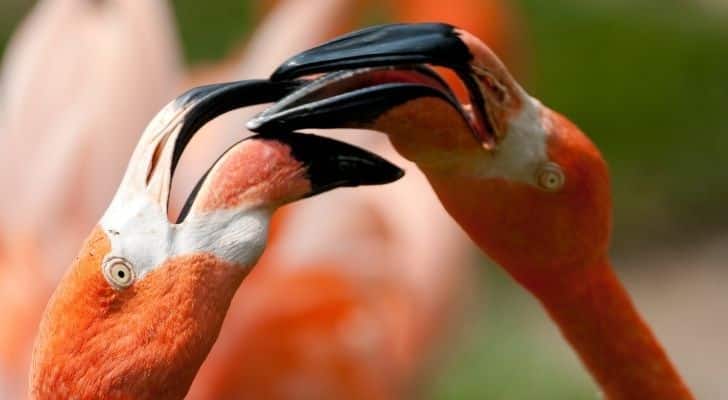
The Lesser, James’ and Andean flamingos have a beak referred to as a deep-keeled bill.
Due to their shape, these flamingos mostly only eat algae.
Greater, Chilean, and American flamingos have what we call shallow-keeled bills.
This means their diet is slightly different from the others as they can slurp up insects, invertebrates, and small fish.
The bend halfway down the flamingo’s leg is actually its ankle, not its knee!
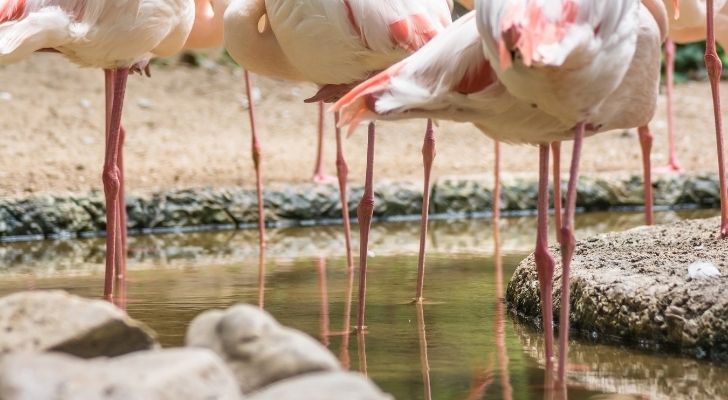
When looking at a flamingo, you may think that the notch on its leg is its elbow, but it is, in fact, an ankle.
This means that from the ankle down are the flamingos’ feet, which also means that half of the flamingos’ legs are actually toes.
When a flamingo is on its feet, it is essentially standing on the tip of its toes.
There is a joint towards the bottom of the foot, which we might think looks like an ankle, but it is essentially more like a knuckle.
This is easier to see in chicks as they are still developing, so you can identify the toes from the leg.
When flamingos fly, they don’t tuck their legs in.
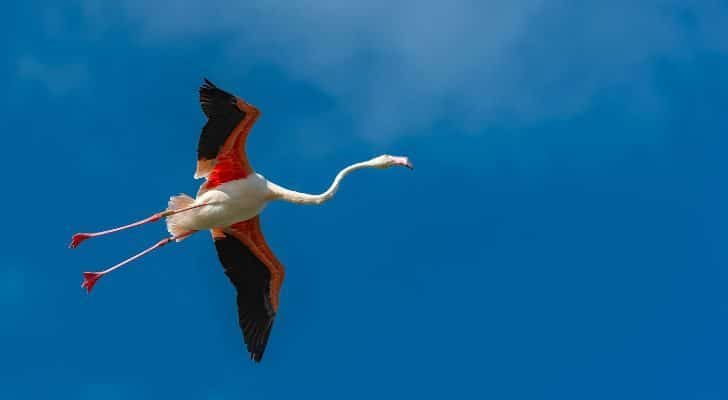
Most birds have small legs compared to their body size, so we don’t really notice where their legs go when they fly.
It is common for birds to tuck their legs close to their bodies when they fly, thereby becoming more streamlined. However, flamingos do the opposite.
They lengthen their legs and keep them out straight when in flight, giving the bird better balance and making them more aerodynamic.
Flamingos mostly lay one large egg once a year.
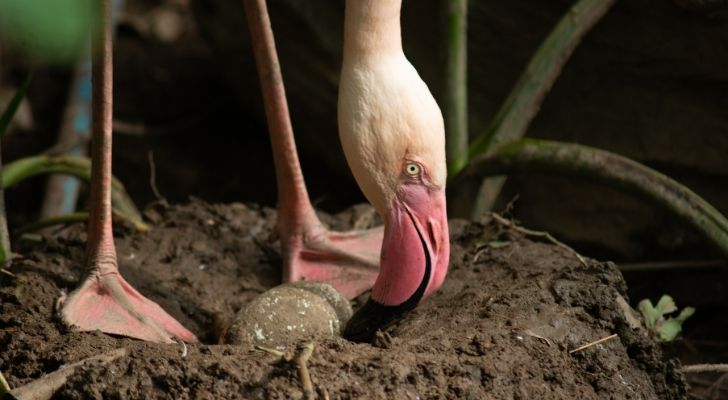
A flamingo will reach its sexual maturity anywhere between three to six years old.
Once a flamingo becomes fertile, it will only mate and nest once a year.
Flamingos use mud, stones, and feathers to build their nests for laying.
When flamingos mate, they will only fertilize and lay one egg. Eggs usually weigh between 0.25 to 0.3 pounds (115 to 140 grams), and it’ll take around 27 to 31 days for the offspring to hatch.
If a flamingo lays two eggs, it is very unlikely that both will hatch.
Having an irrational phobia of flamingos accounts for 1 in every 300 people.
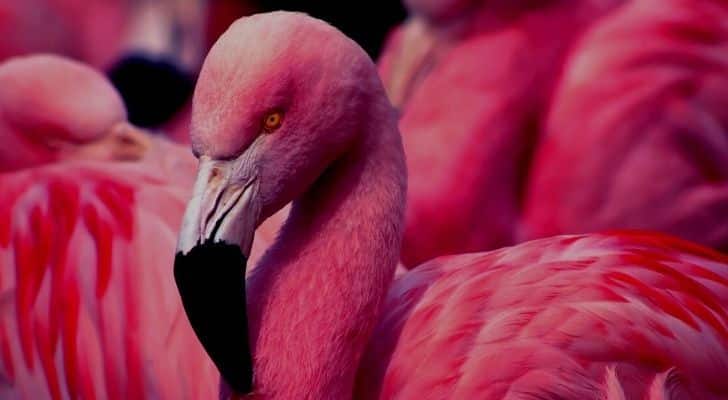
Most people have a fear of something, and for some, it is the fear of flamingos.
Also known as Phoenicopterus phobia, the fear of flamingos occurs in every 1 out of 300 people.
The main features that people find terrifying are their eyes, as they are red or yellow and have a tiny bead-like black pupil in the center.
Another feature that people find uncanny is their super skinny mechanical-like legs.
Most cartoon flamingos are cute, fluffy, and fun-looking, but real-life flamingos have a more demonic look with piercing eyes and an odd mechanical-like body.
The oldest flamingo on record lived to be 83 years old.
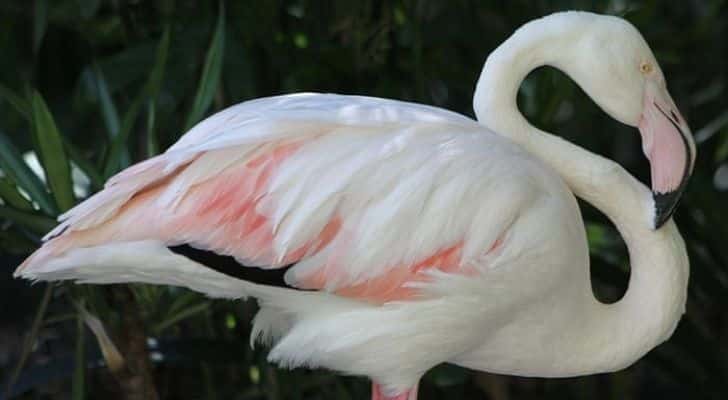
In 2014, Adelaide Zoo in Australia put to sleep their eldest flamingo called Greater, due to complications with its old age and arthritis.
Greater arrived at the zoo in 1933 and was given its name after its species of flamingo.
In the wild, flamingos live much shorter lives, estimated between 20 to 30 years.
Flamingos in zoos generally live up until the age of 50, so Greater is known as the world’s oldest flamingo.
Flamingos are known as the world’s longest-living birds.
The flamingo is the national bird of The Bahamas.
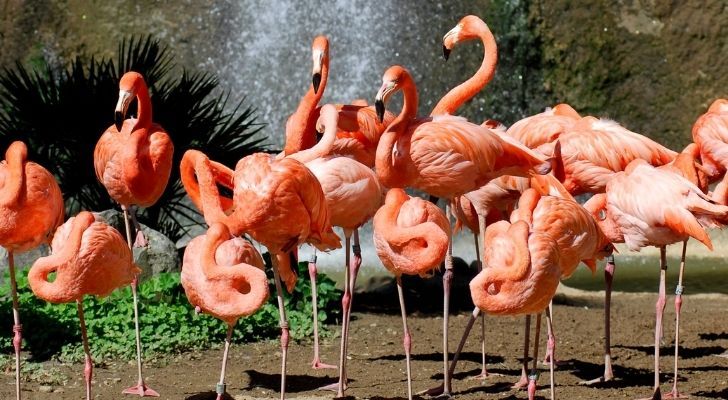
The national bird of The Bahamas is the flamingo.
The Bahamas National Trust was established in 1959, and it employs wardens to protect its flamingo species in nature reserves.
The Caribbean flamingo is found predominantly in The Bahamas.
Flamingos feel most secure when they are together.
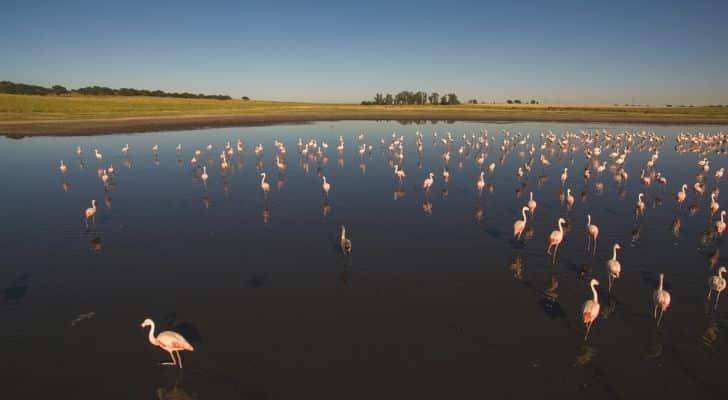
Flamingos tend to stay in groups and prefer the company of others. This is mainly for protection against predators.
When they feed, they become quite vulnerable as their heads are upside down in the water, so visibility becomes difficult.
This means that a predator could easily attack. However, when in a group, they become more protected.
A group of flamingos is called a flock.
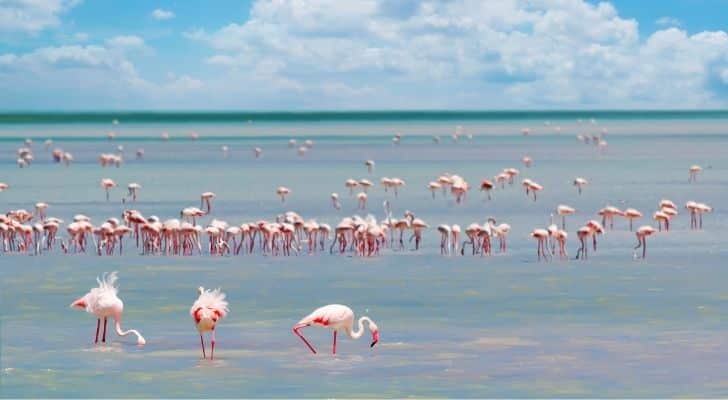
There are many terms for groups of animals, and for flamingos, they are referred to as a flock.
They are sometimes referred to as a colony, but “flock” is the most common word for describing a group of flamingos.
A flock of flamingos will usually remain together for feeding, migration, and breeding.
Flamingos have to feed with their heads upside down.
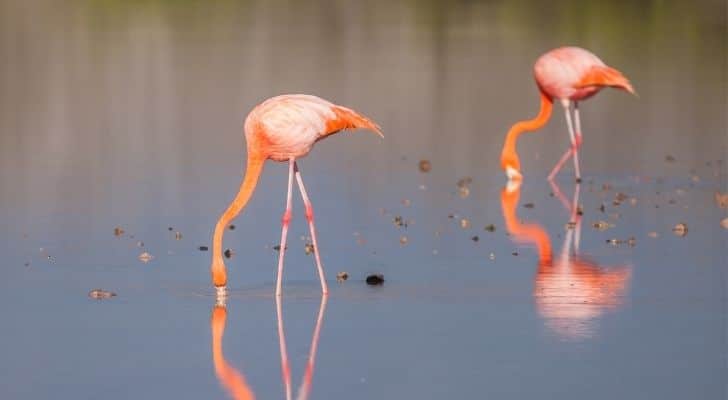
Flamingo’s bodies are designed so that they feed with their head upside down. They can do this because they have a filter in their beak and are known as filter feeders.
Flamingos will stir up the muddy water with their feet, which loosens or disturbs algae, larvae, and shrimp. The flamingo will then scoop its head down into the shallow water and slurp up a mouthful.
It will then close its mouth and use the filters to push the salty water out through its beak.
They will be left with the remains of their catch in their mouth.
The word “flamingo” originates from the Spanish word meaning “flame-colored.”
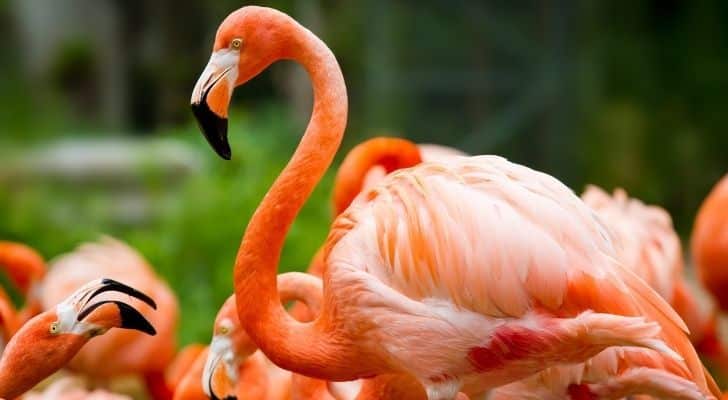
It is thought that the name flamingo comes from the Latin word “flamengo” or “flamenco.”
Flamengo means flame-colored in Spanish.
Phoenicopterus is the Greek name for flamingo, which translates to means “blood-red feathered.”
Flamingos are fantastic, flexible birds that are long-living and adaptable to their surroundings.
These pink birds get their vibrant color from carotene, which is found in their diet, and prefers to be in a flock in wetlands and salt flats.
Are you fearful or fond of these fabulous birds?

